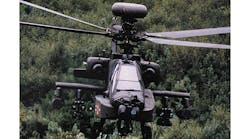Transparency Market’s report “Military Radar Market—Global Industry Analysis, Size, Share, Growth, Trends and Forecast, 2013-2019” says that the United States will continue to hold onto the highest share of the market through 2019. However, over the next 10 to 15 years, demands for radar systems in China are expected to dramatically increase as the country invests more heavily into its military in a quest to become a world superpower.
The overall global military radar market should reach $8.4 billion (U.S.) by 2019, growing at a CAGR of 2.9% from 2013 to 2019. Saurav Kumar, research analyst at Transparency Markets, says such a ramp-up can be attributed to a number of factors, including economic and security concerns; government investments in defense; target recognition; greater demand for lightweight radars; and border protection issues.
The ground-based military radar segment is expected to capture the largest market share with 30.5%, due to demands for upgraded land-based systems in the growing number of wars and conflicts being fought on land. Airborne military radar follows with 30.4%, while naval and space-based systems bring up the rear at 23.1% and 15.98%, respectively. Airborne military radar is expected to grow at the highest CAGR of 3.1% from 2013-2019, mainly fostered by advances in warfare technology and demand for aircrafts and fighter jets.
Threats from external forces like terrorist groups put North America at the top of market share for military radar in 2012. Coming in second are Asia Pacific countries encompassing China, India, Japan, and South Korea. In 2014, China plans to spend over $130 billion on its defense forces and is expected to grow at a CAGR of 3.4% from 2013-2019. The country is developing advanced radar capabilities designed to target missiles, stealth aircrafts, and others. India is expected to invest $8 million toward modernizing equipment and R&D within the next 10 years, driven to a degree by threats of terrorist attacks. In addition, India’s air force continues to stockpile airborne radars for aircraft countermeasures at long ranges as well as develop Active Electronic Scanning Array (AESA) radar.
Japan seeks improvement in its military radar to counter North Korean missile threats. The country, which is installing a U.S. advanced missile-detection radar system off of its coast, currently uses X-band radar to track such ballistic missiles. South Korea tabbed Longbow International to provide radar and associated equipment, at a cost of $51 billion. It anticipates that Longbow FCR radar will increase pilot’s situation awareness, lethality, and survivability. By 2020, it’s expected South Korea will have stealth detection radar to counter radar-evading aircrafts from Asian countries.
As for radar-system market providers, the top five companies hold a combined 54% marketshare. No provider boasts the largest share, because government tenders drive the market. Key players include Lockheed Martin, Northrop Grumman, Raytheon, BAE Systems, and Boeing.
